Five Years a Homesteader: Our Current Off-Grid Household Infrastructure
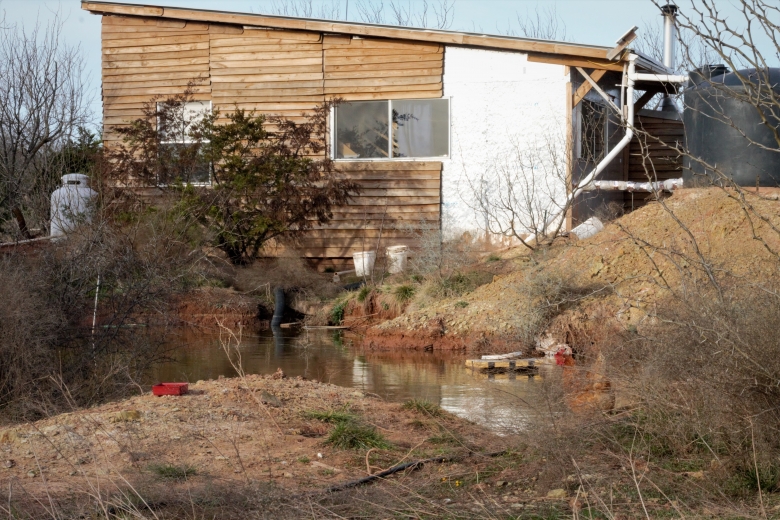
Sometimes people ask us what it looks like to live off-grid. Like many words, it has different meanings depending on who you talk to. Our version of off-grid infrastructure has had many iterations in the five years we’ve lived here and where we are at currently is probably the most workable it has ever been. By that I mean that, while we still have more improvements to make, it seems like we have finally landed on the right tools for the job.
I thought the above picture of the back of our house was a good representation of where we are currently at.
Shelter
The house is just under 700 square feet, 400 of which is sleeping quarters. The rest is the kitchen with a small bathroom and a laundry sink area for washing by hand. At some point, Lord willing, I’d like to share more details about those.
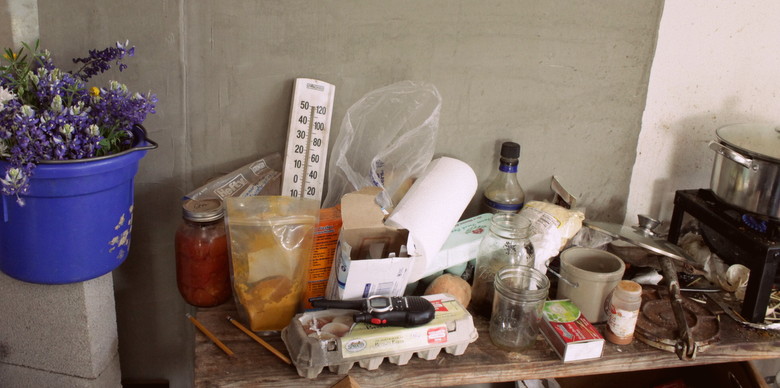
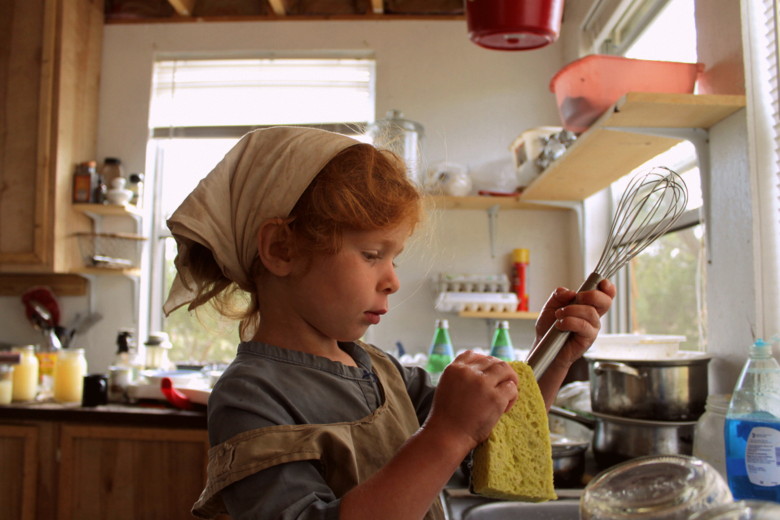
This kitchen literally changed my day-to-day life; it sounds dramatic but it’s actually quite true. It allowed me to get past many shortcomings in infrastructure in order to let go of some of the excuses I had given myself for not putting in the effort to properly nourish my family.
It made fermenting and canning garden vegetables a simple part of my everyday chores. And I can’t imagine that I could have done all of the recipe testing I did for Traditionally Fermented Foods without the counter tops and kitchen sink setup that we now have. I am very grateful that the Lord provided everything for the building and that he put it in Stewart’s heart to make it such a high priority in the construction of the house. In many ways our family is healthier because of it.
Helpful Resource: The Solar House: Passive Heating and Cooling
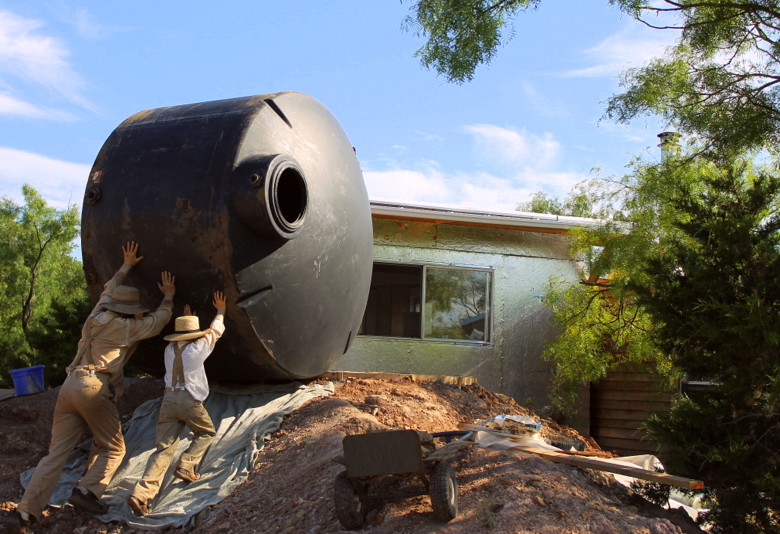
Water
We catch rainwater and currently use two large black tanks to store it for use in the home. In the lead photo you can see the tank on the right which we elevated to bring gravity-fed water into the house. This goes to a hose in the kitchen sink, the laundry sink, and a bathtub.
Lord willing, we hope to add another water tank to catch water from the forthcoming barn roof. In washing laundry at home by hand for seven people we go through a lot of water. This new tank will be mostly dedicated to that use. I should also note that I don’t always wash laundry at home. When water or time – or both – are short, we frequently wash many loads at the laundromat when we are going to town for other errands.
Helpful Resource: Rainwater Harvesting for Drylands and Beyond

Ponds
That “pond” at the forefront of the lead photo is actually the hole we dug to build our underground house in. For now it contains a solar-powered water pump which waters our gardens and fruit trees and as such has been a great blessing to our agrarian endeavors.
We have two other ponds that we dug with a backhoe the first spring we lived here. Both are located near the main garden and orchard areas but the front pond has now had so much erosion that it is now more of a cattail garden than anything.
The goat pasture also includes small ponds for watering the animals and helping to keep water on the property.
Helpful Resource: The Bio-Integrated Farm
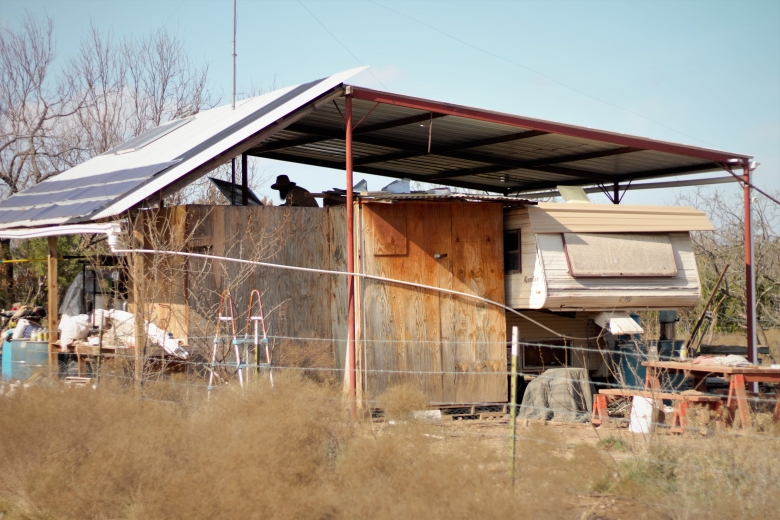
Power
Propane
Last year we decided to replace the small propane tanks we were filling regularly with a large one we wouldn’t have to go to town to fill. This we use exclusively for the cook stove in our kitchen.

Heat
We have a wood stove we use for heat and cooking in the cooler months (mostly November – March). We also have a lot of south-facing windows which makes a huge difference in the amount of wood needed to heat the house on sunny days.
We put the wood stove in with the bedrooms originally out of necessity since that was built before the kitchen. Now we heat only the bedrooms at night (and sometimes during the day) and close the door to the kitchen. Most of our firewood has been reclaimed from a local sawmill or harvested here on our acreage.
Waste
Here’s the thing that’s a huge priority but no one wants to talk about. We have mostly used a bucket system since moving off-grid. Our first temporary outhouse was an A-frame with a tarp and their is a hilarious story involving one of the children and a huge gust of wind which tells of its demise. I’ll leave out the details of that incident but ever since, we have used what I call the inside outhouse.
To accommodate our larger family, and since we live in a neighborhood where outhouses are the norm, we’d like to dig and build an outhouse to go along with it, if the Lord wills.
Helpful Resource: The Humanure Handbook
So that is where we are, five years on. Looking back, there have been great changes to our infrastructure from then to now. It was admittedly quite difficult for a few years when our set up didn’t quite match the size of our family or the needs of our circumstances… but it certainly was a learning process and one I am grateful for.
And while there are many things Stewart and I say we would do differently, the Lord has been faithful through this process to show us many things about sustainability and, more importantly, what was in our own hearts. May He be glorified through this agrarian journey and teach us to “Seek ye first the kingdom of God, and His righteousness…”.

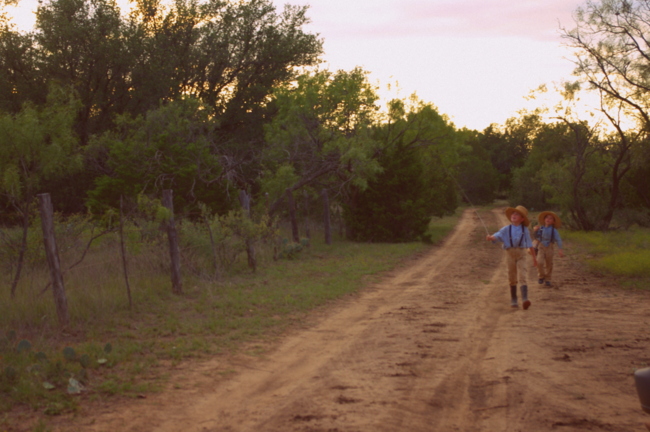
I have asked this but I think it was lost in the cyberspace. You said you don’t have outdoor toilets but you use buckets. Do you compost the human waste, and if so, does TX have regulations for humanure composting?
You do not need a permit to have a composting toilet in Texas if you live in a county with less than 40,000 people. If you live in a county with a higher population you have to have a permit. I do not think that local governments actually care unless someone in the residence becomes ill from a waste borne illness. It is more of a well will leave you to yourself unless it becomes a problem.